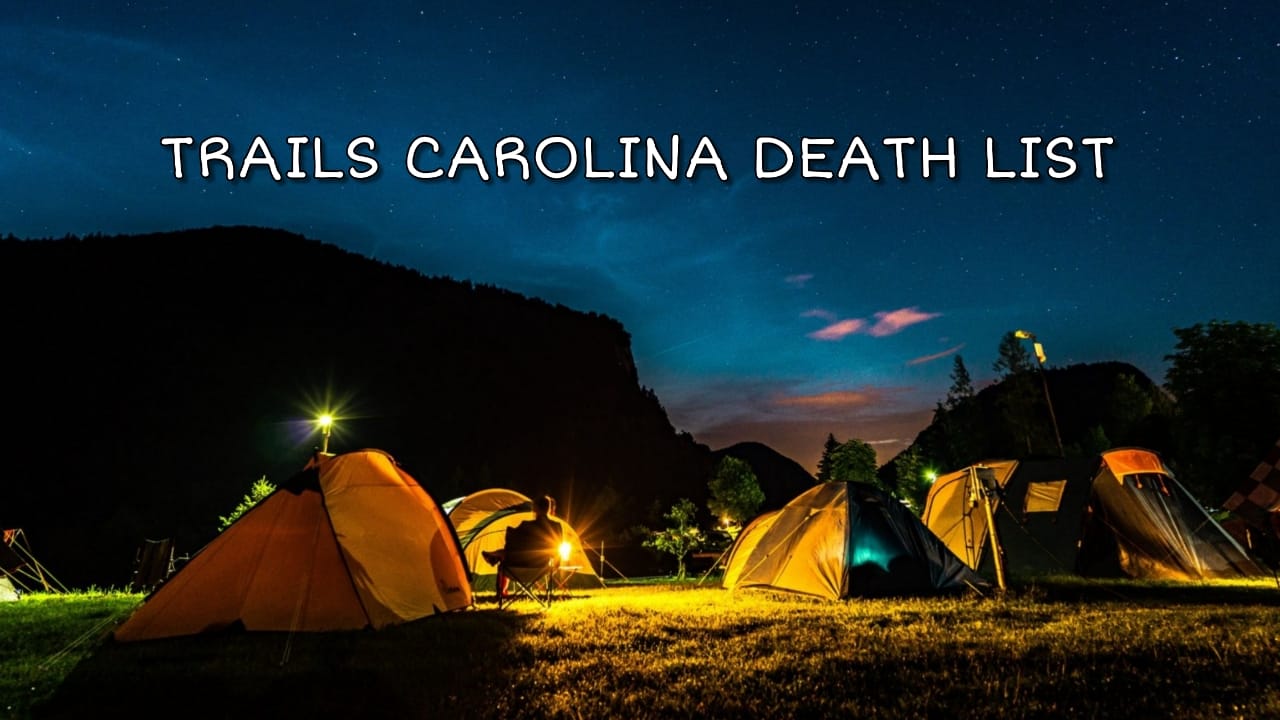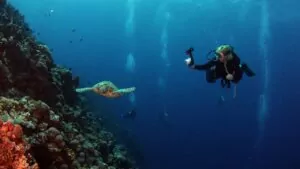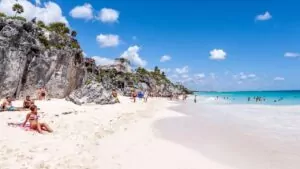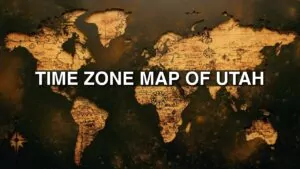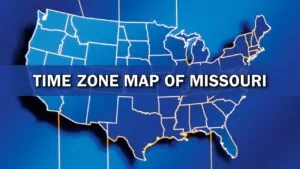Hearing about tragedies at places meant for healing and growth shakes us to the core. When a wilderness camp, aimed at helping troubled youth, becomes the scene of heartbreak, it’s natural to want answers.
The news from Trails Carolina is especially disturbing..four young lives lost since 2018.
Trails Carolina has faced intense scrutiny after these incidents came to light. It’s a hard pill to swallow – acknowledging that spaces designed for transformation can sometimes harbor risks.
In this article, we get down to brass tacks on what really happened and why it matters. We’ll explore not just the heartbreaking events but delve into the larger conversation about the safety and ethics of wilderness therapy programs.
You’re right where you need to be if you’re searching for clarity amidst confusion..Read on.
The History of Trails Carolina and Wilderness Therapy Programs
Trails Carolina took the idea of healing through nature and ran with it. They aimed to help kids in trouble by throwing them into the great outdoors, thinking fresh air and trees could work wonders.
Using nature as a catalyst for healing and development
Nature isn’t just a backdrop for selfies or a weekend getaway spot. It’s a powerful therapist in its own right, especially for young folks wrestling with life’s heavy punches. At Trails Carolina, they’ve tapped into this natural healing power to help teens facing all kinds of struggles, from battling mental health issues like anxiety and depression to overcoming behavioral challenges.
The big idea? Let Mother Nature do the talking — fresh air, wide-open spaces, and physical activity can work miracles on the mind.
Here’s how it goes down: young people step out of their comfort zones and into the wilderness. They swap screens for green scenes and digital chats for real-life conversations around campfires.
It’s not about survival of the fittest; it’s about learning resilience, teamwork, and self-discovery through nature immersion and therapeutic interventions. These experiences aim to plant seeds of change that grow long after they leave Transylvania County’s woods behind.
Aim to assist troubled youth through nature immersion and therapeutic interventions
Trails Carolina steps into the life of a struggling teen like a fresh breath of air. It’s not just about camping and hiking; it’s about healing through the great outdoors. Imagine trading your video game addiction for starry nights, or swapping panic attacks for peaceful moments by a creek.
This wilderness therapy program uses nature as its classroom, offering teens a break from their battles with mental well-being issues, from eating disorders to post-traumatic stress disorder.
Here, young people do more than learn survival skills; they discover coping strategies that don’t involve anger management issues or substance abuse. With therapists leading the way, this journey is about turning over a new leaf – all under the vast sky and among towering trees.
It’s about building self-esteem away from the pressures of daily life and finding calm in chaos. Through therapeutic interventions amidst nature’s serenity, Trails Carolina aims to light up dark paths troubled youths might find themselves on.
Tragic Incidents at Trails Carolina
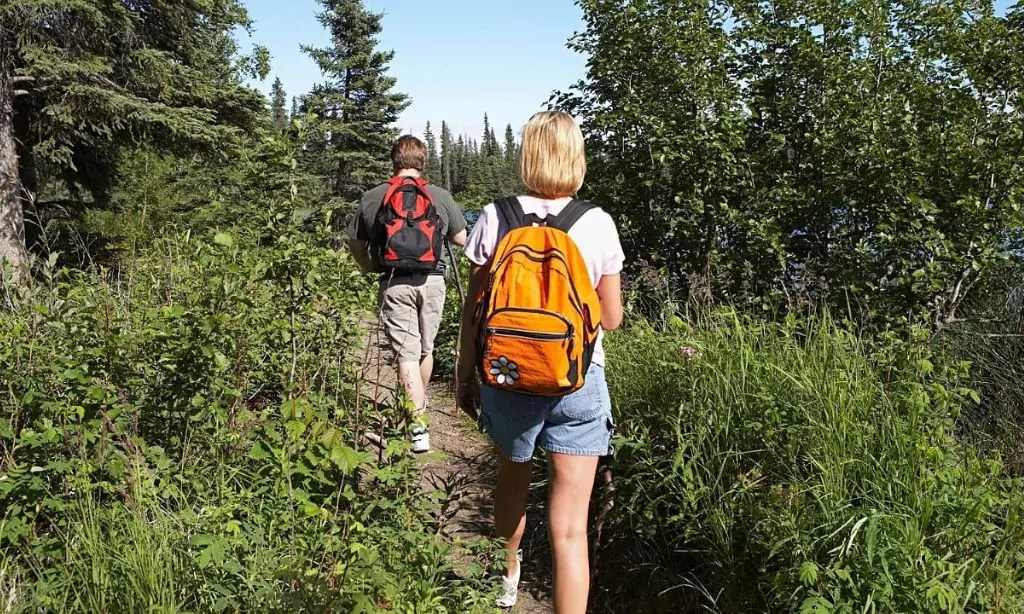
At Trails Carolina, the wilderness whispered tales of sorrow, not just growth. Hearts broke as young lives were lost amid nature’s embrace.
Deaths of Alec Lansing, Katelyn Haruko, Sergey Blashchishen, and Caleb Jensen
Tragedies at Trails Carolina have cast a shadow over wilderness therapy. The deaths of Alec Lansing, Katelyn Haruko, Sergey Blashchishen, and Caleb Jensen stir deep concerns and debates.
- Alec Lansing vanished during a hike. Hours turned into days before they found him, too late. His story raises questions about supervision and response times in emergencies.
- Katelyn Haruko’s journey ended tragically due to health complications. It highlights the need for medical support and quick action in crisis situations within these programs.
- Sergey Blashchishen faced the hardest battle of his life, only to lose it under the harsh conditions of wilderness therapy. This incident shines a light on the importance of preparing participants for physical challenges and environmental hazards.
- Caleb Jensen’s passing was a wake – up call regarding safeguarding teenagers from potential risks. It underscores the crucial role of safety measures in preventing accidents.
Concerns about safety measures and monitoring of participants
The trails at Trails Carolina were meant to be paths of healing, but for some, they led to tragedy. With the deaths of Alec Lansing, Katelyn Haruko, Sergey Blashchishen, and Caleb Jensen since 2018, questions pile up like leaves in autumn.
How close an eye are staff keeping on these young adventurers? In the wilds of therapy and transformation, ensuring each participant’s safety becomes a mammoth task.
Mistakes have fatal consequences here. Accidents waiting to happen lurk behind every tree and rock when oversight is not tight enough. The Transylvania County Sheriff’s Office calls them “accidental deaths,” but could better monitoring and tighter restraints have rewritten these stories? It seems clear: more eyes, more training, and quicker responses might stop history from repeating itself in this corner of the woods.
Legal Claims and Accountability
Some families stepped forward, their hearts heavy with grief, demanding answers and justice. They filed lawsuits against Trails Carolina, accusing them of negligence and failure to protect their kids.
Allegations of forced physical restraints, excessive force, and inadequate training
Trails Carolina has faced serious accusations. These include forced physical restraints, excessive force, and inadequate training of staff. Here’s what we know:
- Forced physical restraints: Participants reported being held down against their will. This practice raises big red flags about respect and safety in the program.
- Excessive force used on participants: Some kids said staff members used too much strength when handling them. It’s a situation that can scare anyone, especially when you’re far from home.
- Inadequate training for staff: A major concern is that those who work there didn’t get the right training. They need skills to support kids with challenges without resorting to force.
Discussions on program’s accountability to its participants
The spotlight on Trails Carolina shone brightly after devastating events unfolded, rocking the very foundation of what wilderness therapy stood for. In 2014, a wave of legal claims crashed against its shores, pointing fingers at forced physical restraints and shouting about inadequately trained staff.
These weren’t just whispers in the dark; they screamed for a reckoning, demanding that accountability wasn’t just a word tossed around but an action taken seriously.
It’s like walking on thin ice – one wrong step and down you go into icy waters. For any program dealing with young lives already caught in stormy seas, being equipped with the right tools isn’t just important; it’s essential.
Imagine sending someone to navigate through harsh wilderness without a compass or map – that’s how pressing the need is for therapeutic camps to wield expertise like skilled warriors.
Ensuring not only safety but nurturing growth requires every ounce of commitment to their well-being – anything less can lead down paths no one wants to tread again.
Concerns and Debates
Is wilderness therapy a healing path or a hike into danger? Families are torn, wrestling with grief and unanswered questions.
Effectiveness and moral implications of wilderness therapy
Wilderness therapy walks a tightrope between healing and harm. It’s like flipping a coin where one side promises growth through nature, and the other risks overshadowing that growth with ethical dilemmas.
Imagine sending troubled youth into the wild, expecting them to emerge transformed. The idea sounds promising – after all, who wouldn’t feel a sense of renewal surrounded by nature? Yet, this form of therapy is not just about camping under the stars or hiking through forests.
The deaths at Trails Carolina cast long shadows over wilderness therapy’s perceived benefits. Families send their loved ones into these programs hoping for positive change, but some face their worst nightmares instead.
It raises tough questions: Where do we draw the line between pushing limits for personal development and ensuring safety? How do we balance strict discipline with compassionate care? The emotional toll on families is immense when things go wrong, challenging us to reconsider if this method truly holds water against traditional psychotherapist-led counseling or trauma-informed care.
Emotional and psychological toll on the families involved
Families of Alec Lansing, Katelyn Haruko, Sergey Blashchishen, and Caleb Jensen face a nightmare no parent should endure. Losing a child is like having your heart ripped out—without warning or mercy.
Nights turn sleepless as they wrestle with “what ifs” and “if onlys”. Days blur together in a haze of grief and unanswered questions about wilderness therapy’s true cost.
Now imagine birthdays, holidays, every family dinner with an empty chair. That pain never really fades; it just changes shape over time. Parents and siblings grapple not just with loss but also anger toward those they trusted with their loved one’s life.
This tragedy alters their world view, leaving scars that may never fully heal. And yet, amidst the anguish, these families find strength to seek justice for the lost—pushing for change so no other family endures such sorrow due to neglect or mistreatment at similar programs.
Promoting Safety in Wilderness Therapy Programs
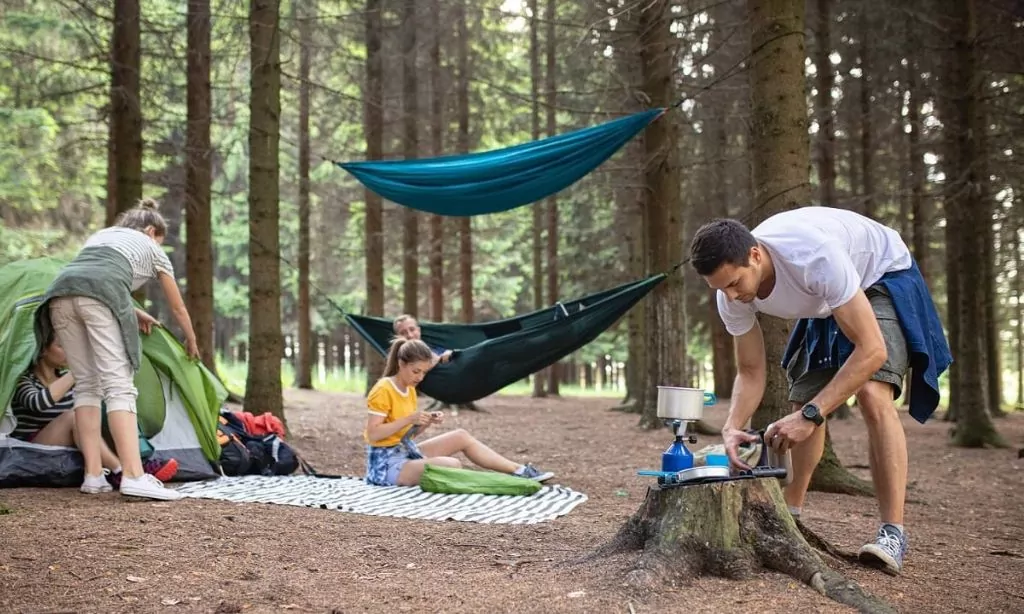
Making sure everyone stays safe in wilderness therapy is super important. It’s all about keeping an eye out and making smart moves to stop bad things from happening.
Prioritizing accreditation, staff expertise, medical support, and safety measures
Safety first, right? Especially when it’s about guiding troubled youth through the healing power of nature. Wilderness therapy sounds great – until it’s not. That’s why places like Trails Carolina must put safety at the top of their list. Here’s how they can do just that:
- First off, get that accreditation badge shining. It’s like a trusty compass in the wild, showing parents and guardians that this program knows its stuff. Accreditation means an organization looked them over and said, “Yep, you’re doing it right.”
- Now let’s talk experts – not just anyone who loves a good hike. We need folks with degrees, experience, and a knack for helping young minds bloom. Staff expertise isn’t just a plus; it’s a must.
- Medical support on standby is like having a superhero team waiting in the wings. Things can go south fast in the wilderness; bee stings, slips, or worse. Having medical pros ready ensures quick action when needed.
- Safety measures are your bread and butter here. Imagine it: GPS trackers for everyone, check-in points along trails, and emergency drills that everyone takes seriously – no eye-rolling allowed.
Importance of family engagement for ensuring safety and effectiveness
Having families in the loop makes a world of difference for wilderness therapy programs. It’s like having an extra set of eyes and ears, keeping tabs on what’s happening. This involvement shores up safety measures and cranks up the accountability notch.
After all, who knows a kid better than their own family? They’re quick to spot if something doesn’t seem right, making sure concerns are heard loud and clear.
Open lines of communication between families and program staff are nothing short of essential. It transforms the therapy from just okay to truly effective. By sharing insights about their kids, families help tailor the therapeutic process to fit like a glove.
Plus, being part of the journey from day one means they’re clued into any tweaks in safety protocols or improvements needed along the way—ensuring everyone sleeps a little easier at night.
Public Perception and Industry Oversight
The buzz around Trails Carolina has folks raising eyebrows, wondering if what they heard is true. It’s a call to action for tighter checks and balances, making sure those outdoor healing adventures stay on the up and up.
Influence of distressing narratives from Trails Carolina on public perception
Stories from Trails Carolina have cast a long shadow over wilderness therapy. These tales of tragedy shook many people to their core, sparking a debate about the safety and ethics of using nature as a therapeutic tool.
Suddenly, conversations weren’t just about healing in the great outdoors but also about risks that might lurk beneath the surface.
Public trust started to waver as details emerged from Trails Carolina. The death list did more than raise eyebrows—it ignited a firestorm of questions regarding how these programs operate.
People began demanding change, insisting on stricter oversight and clearer accountability for these retreats intended for healing. This shift wasn’t subtle; it was profound, changing the way both supporters and skeptics view wilderness therapy programs.
Call for stricter oversight, more openness, and greater accountability
After the dust settles on shocking stories from Trails Carolina, people are talking. They’re not just whispering in corners; they’re shouting for change. The heartache of losing teens like Alec Lansing and Caleb Jensen hit home hard.
It’s clear as day—wilderness therapy needs a serious makeover. Stricter oversight? Yes, please. More openness about what really goes down behind those serene landscapes? Absolutely necessary.
And accountability that sticks instead of slips through fingers? Non-negotiable.
Everyone agrees—it’s high time to flip the script on how these programs run. No more hiding behind towering pines or mystery-shrouded methods. Parents and guardians deserve to know who holds the reins and how tightly they’re gripped.
Because when it boils down to it, nothing—not video game addictions or battles with inner demons—should lead to a child becoming a name on a tragic list. Safety nets need strengthening, eyes need peeling, and standards must soar sky-high.
Lessons and Reforms
Wilderness therapy programs are stepping up their game, learning from past mistakes. They’re now beefing up staff training and making sure risks are kept to a bare minimum.
Implementing best practices for risk management
Keeping everyone safe at wilderness therapy programs is a big deal. It’s all about making sure nothing bad happens while kids are trying to get better. So, here’s the scoop on how to keep things safe:
- Get Everyone on the Same Page: Make sure all staff know what’s up with safety rules. This means lots of training and reminders that safety comes first, no matter what.
- Double Check Gear: Before any adventure starts, look over every piece of equipment. If it looks old or sketchy, swap it out. No one wants a rope snapping mid-climb.
- Know Who You’re Working With: Understand each kid’s needs and limits. Some might be scared of heights; others could have allergies. Keeping track of these details prevents accidents.
- Stay Close to Help: Always have a way to call for backup if things go south. Whether it’s a walkie-talkie or a fully charged cell phone, being able to reach help fast can save lives.
- Regular Health Checks: Keep an eye on how everyone’s doing, physically and mentally. If someone seems off, it’s time for a chat to figure out what they need.
- Plan for the Worst: Have a solid emergency plan in place. Know where the nearest hospital is and the fastest way to get there just in case.
- Listen Up: Pay attention when someone says they’re not okay or something doesn’t feel right. Sometimes, catching a small issue early stops it from turning into a big problem.
- Keep Learning: After each program ends, sit down and think about what went well and what didn’t. This helps make things even safer next time around.
Enhancing staff training and qualifications
Boosting the skills and know-how of staff is like giving them a superpower. It’s all about turning challenges into opportunities for growth. Here are some steps to make that happen:
- Focus on specialized training – Dive deep into the world of wilderness therapy. Make sure every team member knows their stuff, from basic survival skills to advanced therapeutic techniques. This isn’t just about tying knots or lighting fires; it’s about understanding the healing power of nature.
- Bring in experts – Why not learn from the best? Guests speakers, seasoned therapists, and clinical psychologists can offer insights no textbook can match. Imagine a campfire talk where stories shift perspectives and open hearts.
- Regular refreshers – The brain can be a bit slippery, forgetting things when you least expect it. Set up annual or semi-annual training sessions to keep everyone sharp. Think of it as a tune-up for the mind.
- Real-world practice – There’s theory, and then there’s reality. Create simulations or role-play scenarios that mirror real challenges faced in the wilderness. It’s like dress rehearsal for the main show, ensuring everyone’s ready when the curtain rises.
- Feedback loops – Keep the lines of communication wide open. After each program, gather feedback from participants, families, and staff alike. What worked? What didn’t? Use those insights to adapt and improve.
- Safety first – No cutting corners here. From first aid certifications to crisis management drills, make sure every possible emergency is covered. Think of it as building a safety net so strong that everyone feels secure enough to soar.
- Emotional intelligence workshops – Dealing with troubled youth requires more than patience; it demands empathy on steroids. Teach your team how to read between the lines, recognize unspoken distress signals, and respond with heart.
Conclusion
The journey through the tangled woods of Trails Carolina shows us that even good intentions can lead to tragic pits. It’s a tough pill to swallow, but these stories shake the branches, letting sunlight reach the dark corners of wilderness therapy.
They remind us: safety first, questions later isn’t just a saying—it’s a lifeline. Let this be a lesson not learned in vain; instead, let it guide us towards creating safer spaces for healing under the open sky.
And hey, maybe it’s time we plant new seeds of understanding and accountability in this field—after all, from rocky soil can spring forth blooms of change.

